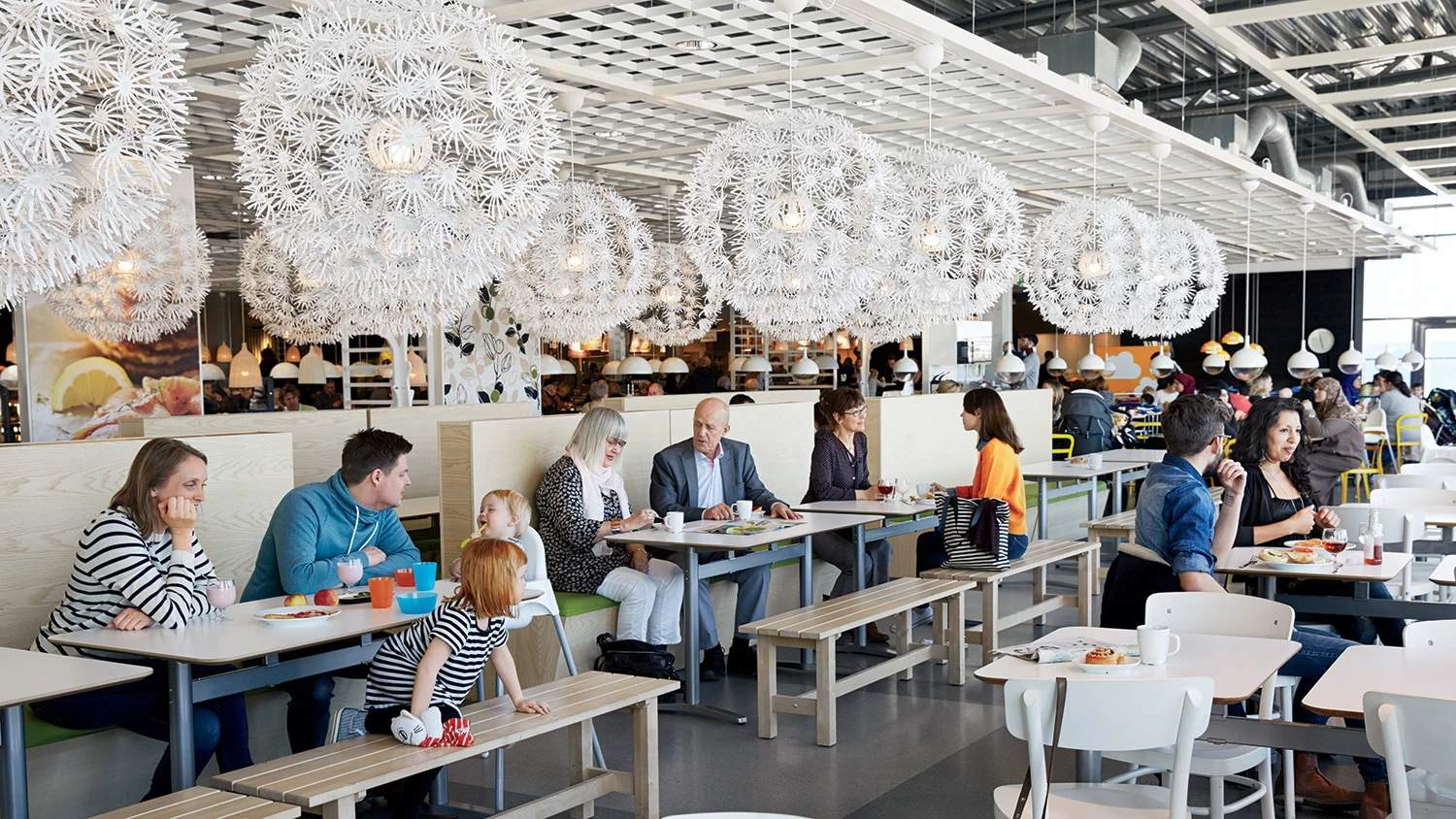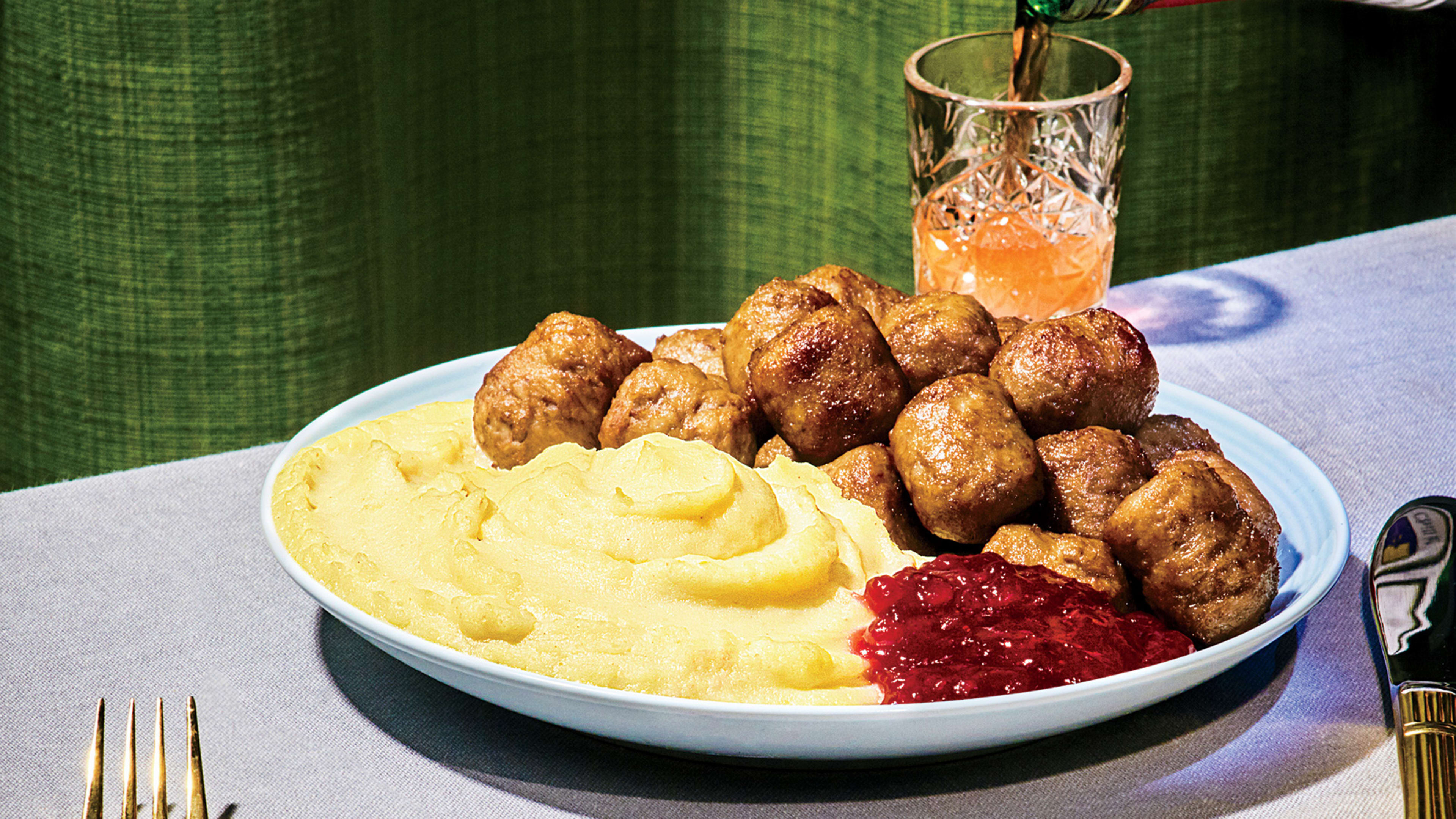A year after the first Ikea store opened in Sweden in 1958, founder Ingvar Kamprad installed an amenity that would be recognizable to current-day shoppers worldwide, from Tempe, Arizona, to Wuxi, China: a sit-down restaurant with a small menu featuring wholesome Scandinavian staples. And for the next 50-plus years, Ikea management continued to think about its food operation pretty much the same way Kamprad did. “We’ve always called the meatballs ‘the best sofa-seller,'” says Gerd Diewald, who runs Ikea’s food operations in the U.S. “Because it’s hard to do business with hungry customers. When you feed them, they stay longer, they can talk about their [potential] purchases, and they make a decision without leaving the store. That was the thinking right at the beginning.”
But sometimes a company can find its next growth engine in surprising places, if it just looks at its business creatively enough. Over the past several years, Ikea’s food division—which also includes the Swedish Food Market (where you can buy everything from jars of herring to make-at-home versions of the restaurant menu)—has proved to be much more than just a tool to move more Vittsjö TV stands. By focusing on this formerly unloved division, and locking into prevailing trends around ethically sourced ingredients and healthier options, Ikea has turned food into one of its fastest-growing segments. The company is now considering the next phase of this unexpected revenue generator, and it might even expand into stand-alone cafés in city centers.
How could Ikea have missed such an opportunity for so long? “This might sound odd, but it’s almost something we didn’t notice,” says Michael La Cour, Ikea Food’s managing director. It turns out that Ikea’s main home-goods business is so vast—the company racked up $36.5 billion in revenue last year—that the comparatively small sales impact of lox sandwiches and chocolate cake got lost. “But when I started putting the numbers into context of other food companies, suddenly I could see, well, it really is not that small.” Ikea Food had annual sales of about $1.5 billion in 2013.
La Cour’s team set about examining every part of Ikea’s food business, applying the same kind of thinking the company uses for its furniture business. Leveraging its scale, it streamlined the supply chain, forging a key partnership with a sustainable salmon farm in Norway, along with signing on similarly vetted providers of coffee and chocolate. It moved to aggressively reduce waste—which is down by 30% so far in test locations—by implementing data-analysis tools that determine more precisely how much food to prepare. And it applied the company’s core principles of “democratic design” to the menu, emphasizing elegant form, high quality, sustainability, and, of course, low prices when concocting new culinary products. (Ikea has since become a major global purveyor of certified-sustainable seafood. Less momentous but still significant to jam fans: It’s also Sweden’s biggest exporter of lingonberries.)
New menu items—particularly chicken and vegan Swedish meatballs, which debuted in 2015—were created in response to customers’ desire for healthier, more carefully sourced options, driving sales of what Ikea refers to as “the meatball family” up 30%. (Only about half the menu is Scandinavian—the other half is tailored to each individual market, with a short-rib plate being a current hit in the U.S.) Of course, the biggest thing that differentiates Ikea from other food chains is price. If you’re looking to feed a family of four for $20 or less, there aren’t a whole lot of competitors. “It’s an experience just going there, and that’s what people are looking for in a restaurant meal these days,” says Bonnie Riggs, a restaurant-industry analyst at NPD Group. “But more than that, what you get for your money is far superior to many other family-dining restaurants.”

In the U.S., all of Ikea’s eateries have been updated to reflect the company’s new food thinking. The restaurants, which typically can accommodate 600 or more diners at a time, have been reconfigured into zones that roughly correspond to the different categories of furniture shoppers, from families with kids to young couples furnishing their first apartments. In one area you’ll find a comfortable spot outfitted with lounge chairs and sofas—channeling the current hospitality craze of hygge (Danish for “coziness”)—aimed at people who want to settle down with a coffee. There’s a kids’ play section, with an adjoining dining area for parents. And there is a variety of large communal tables, along with smaller private zones for a more refined experience. “All of our demographic groups intuitively migrate to the right area [for them],” says Diewald. “Just based on the design.”
These efforts have increased food sales by around 8% annually since the initiative kicked off. The company now serves some 650 million diners a year, across 48 countries around the world—adding up to around $1.8 billion in sales in 2016.
Somewhat surprisingly, 30% of Ikea Food’s customers are coming to the stores just to eat—which could present a major opportunity. Over the past two years, the company set up successful pop-up restaurants in London, Paris, and Oslo, which allowed people to get their meatball fix without trekking out into the deep suburbs. Now, the company is mulling over the idea of Ikea restaurants that operate separately from the traditional big-box stores. “The mere fact that we don’t need so many square feet to do a café or a restaurant makes it interesting by itself,” says La Cour. “I firmly believe there is potential. I hope in a few years our customers will be saying, ‘Ikea is a great place to eat—and, by the way, they also sell some furniture.'”
Recognize your brand’s excellence by applying to this year’s Brands That Matter Awards before the early-rate deadline, May 3.
